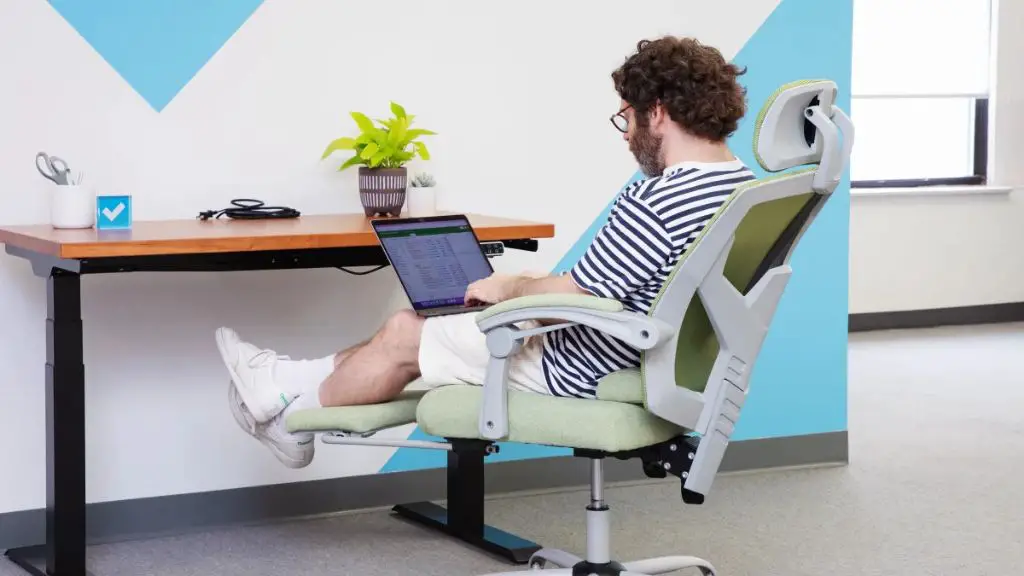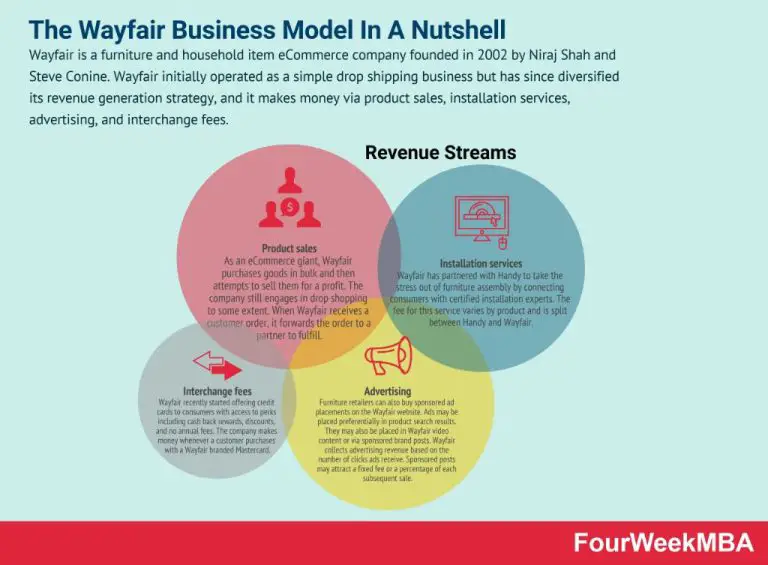Is Swivel On Chair A Good Idea?
A swivel chair refers to an office chair with a rotating seat that allows the sitter to turn left or right without moving the base of the chair. Swivel chairs have become ubiquitous in modern offices, with the ability to spin and tilt providing more ergonomic support. Swivel chairs were invented by Thomas Jefferson in the late 18th century and have evolved over time into a staple of office furniture.
Swivel chairs offer a number of potential benefits but also some drawbacks. On the plus side, the ability to swivel and tilt in an office chair can provide flexibility, better posture, and ease of movement. However, some find swivel chairs distracting and worry they may promote fidgeting. There are also concerns about costs and the environmental impact of these popular chairs.
This article will provide an overview of the pros and cons of swivel chairs, evaluating whether they are indeed a good idea for most office settings. Their widespread adoption indicates swivel chairs meet many workers’ needs, but a closer look at ergonomics, productivity, culture, costs, and alternatives paints a more nuanced picture.
Pros
One of the biggest benefits of swivel chairs is that they allow for greater mobility and range of motion while seated (1). Swiveling the chair makes it easy to pivot and turn to reach different areas of your workspace without having to physically get up and reposition (2). This provides flexibility within a small office area to access different surfaces or angles. Swivel chairs give you the ability to effortlessly glance at paperwork on your desk, swivel to grab supplies from a cabinet behind you, then swivel back, all while remaining comfortably seated (3). The swivel mechanism enables a wider range of motion compared to stationary chairs, allowing you to turn and twist your upper body freely. This can help reduce stiffness from sitting still for too long.

Sources:
(1) https://www.flexispot.com/spine-care-center/the-benefits-of-swivel-chairs-why-you-should-consider-purchasing-one-for-your-home-or-work-space
(2) https://chitaliving.com/blogs/blog/are-modern-swivel-chairs-a-good-idea
(3) https://www.chervinfurniture.ca/2022/03/the-pros-cons-of-swivel-chairs/
Cons
While swivel chairs have some benefits, they also come with some potential downsides. According to ChitAliving (source), the ability to spin and swivel freely in an office chair can lead to distracted fidgeting rather than focused productivity for some people. Excessive spinning can be distracting not only for the person in the chair, but also for nearby coworkers.
In addition, swivel mechanisms contain more moving parts than standard office chairs, making them a bit more prone to breaking over time (source). The swiveling capability also permits slouching postures as it’s easy to swivel side-to-side rather than sitting up straight.
Ergonomics
Proper ergonomics is crucial for avoiding muscle strain and injury when sitting for prolonged periods. Chairs with a swiveling seat allow you to easily turn side to side without twisting your back, reducing strain. According to the University of Pittsburgh’s Office of Environmental Health and Safety, “You may also want to choose a chair that swivels easily” (source).
Adjustability is a key ergonomic benefit of swivel chairs. The ability to raise and lower the seat height ensures your feet are flat on the floor with thighs parallel to it. Having armrests that adjust up and down allows you to keep your shoulders relaxed with elbows at a 90-120 degree angle as recommended by OSHA (Occupational Safety and Health Administration). This reduces tension in the neck and shoulders (source). Adjustable backrests allow you to position the lumbar support to fit your spine’s natural curve.
In summary, the adjustability of swivel chairs enables you to customize the fit to your body, promoting proper posture and comfort during long workdays.
Focus and Productivity
Research has shown that the ability to swivel and make subtle movements in an office chair can boost creativity, focus, and productivity in the workplace. The mobility of swivel chairs allows for fidgeting and small physical adjustments that can help employees maintain focus and concentration on cognitive tasks (Are Modern Swivel Chairs Actually a Good Idea?). Mild movement helps stimulate blood flow and oxygen to the brain, leading to heightened alertness and ability to concentrate.
At the same time, the swiveling mechanism can become a source of distraction and divert focus if abused. Employees may swivel excessively or play with the lever, taking their attention away from work. Frequent, large swiveling motions can disrupt concentration and prove disruptive in open office environments. Workers should be mindful not to fidget constantly or abuse chair swiveling in a way that negatively impacts their own productivity or that of their colleagues.
Office Culture
Swivel chairs have become a staple in modern office environments. According to an article on Autonomous.ai, “The swivel desk chair is a quintessential piece of office furniture. It allows the occupant to turn effortlessly while seated, which is perfect for collaborating with colleagues, taking phone calls, or just having a stretch.” https://www.autonomous.ai/ourblog/hottest-international-modern-office-chair-trends
Many employers expect that employees will have access to an ergonomic desk chair with swivel capabilities. The swivel function enables employees to easily collaborate with coworkers, turn to access different workstations, and adjust their body position throughout the day. Employees have come to expect swivel chairs as standard office equipment. Not having a proper chair can negatively impact productivity, comfort, and engagement at work.
Costs
The costs of swivel chairs can vary greatly depending on the quality and features. Budget models typically range from $100-300, while premium swivel chairs can cost $500-1000 or more. High-end ergonomic office chairs from brands like Herman Miller and Steelcase are usually priced $800 and up.
One of the main factors affecting price is build quality and durability. Cheaper chairs may begin to creak or feel wobbly after a year or two of use. More expensive chairs made with higher grade components like casters, hydraulics, and padded upholstery tend to hold up better over many years of constant use.
According to reviews on sites like Amazon and Wayfair, popular budget swivel chair brands include BestOffice and Hbada, which offer decent quality for under $200. Mid-range options from La-Z-Boy and Modway provide better ergonomics and lifespan in the $300-500 range. For a durable chair that will last 5+ years under heavy use, expect to invest at least $600-800 for brands like Steelcase, Herman Miller, and Humanscale (Amazon).
While paying more upfront is an investment, quality chairs that fit your needs can save costs over time by boosting comfort and avoiding the need for frequent replacements. Evaluate how often the chair will be used, and by whom, to find the right balance of quality and affordability.
Alternatives
While swivel chairs offer flexibility and movement, some people prefer stationary chairs without wheels. Stationary chairs have several advantages compared to swivel chairs:
Pros of stationary chairs:
- Improved focus – Stationary chairs keep you firmly planted, which can help maintain focus on tasks. Swivel chairs make it easy to turn and be distracted.
- Reduced motion sickness – The swiveling motion of swivel chairs can cause dizziness and motion sickness for some people. Stationary chairs provide a stable sitting experience.
- Lower cost – Stationary desk chairs tend to be simpler and have fewer moving parts, making them more affordable than swivel chairs on average.
- Space saving – Stationary chairs have a smaller footprint and take up less room since they don’t require extra space for swiveling or wheeling around.
One popular alternative to swivel chairs are standing desks. Standing desks allow you to alternate between sitting and standing throughout the day, reducing back pain and other issues caused by prolonged sitting. Quality standing desk chairs offer adjustability without wheels. This allows stable seating while promoting movement and posture changes.
Final Recommendation
In deciding whether or not swivel chairs are a good idea for your office, there are valid points on both sides of the debate. On the pro side, swivel chairs allow for more movement and flexibility, which can improve circulation and comfort for employees. The ability to swivel and turn makes it easier to collaborate with colleagues, grab items, and multitask. Swivel chairs may also boost creativity and productivity in some workers. However, on the con side, excessive swiveling can be distracting and make it harder for some people to focus. The constant motion can fatigue the back and neck over time if not used properly. Swivel chairs also tend to be more expensive than stationary ones.
Overall, swivel chairs can be a good addition to an office environment in moderation. The flexibility and mobility can benefit many workers. However, consideration should be given to personal preferences, work style, office setup, and budgets. Not everyone functions best with a swivel chair. Using them alongside some stationary seating options allows employees to choose what works best for their needs. Proper ergonomic guidelines should be followed as well. With the right balance, swivel chairs can enhance comfort and collaboration in an office. But restraint is needed to prevent excessive motion that distracts co-workers.
Conclusion
When it comes to whether a swivel on your office chair is a good idea, we weighed the pros and cons. On the pro side, swivel chairs allow for more mobility and movement, which can improve comfort and ergonomics. They also allow for easier collaboration and communication in open office spaces. However, the cons are that swivel chairs can sometimes lead to distractions, less focus, and unnecessary fidgeting. They’re also more expensive than stationary chairs.
Overall, the verdict seems to be that swivel chairs are worth considering, especially if you work in a more collaborative environment. But they may not be the best choice if you require intense focus for long periods. As with most office furniture decisions, it comes down to personal preference, job duties, office layout, and budget.
In closing, think about your own needs and work habits. Do some test sits in swivel chairs before committing. And make sure to still get up and move around periodically, with or without a swivel!





